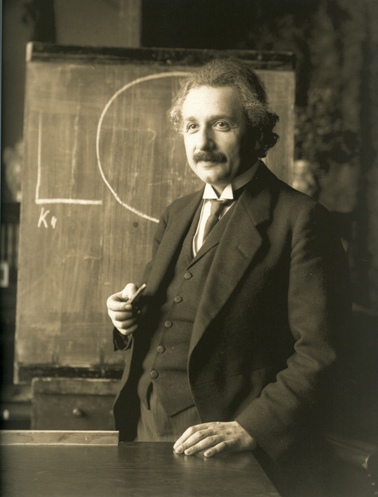Washington, DC
Tuesday, November 30, 2010

“Even I Could Learn a Thing or Two from ATI”
Video Clip: Click to Watch
Since 1984 ATI has provided leading-edge public courses
and onsite technical training
The short technical courses from the Applied Technology Institute (ATI) are designed to help you keep your professional knowledge up-to-date. Our courses provide a practical overview of space and defense technologies which provide a strong foundation for understanding the issues that must be confronted in the use, regulation and development such complex systems.
The classes are designed for individuals involved in planning, designing, building, launching, and operating space and defense systems. Whether you are a busy engineer, a technical expert or a project manager, you can enhance your understanding of complex systems in a short time.
ABOUT ATI AND THE INSTRUCTORS
Our mission here at the ATI is to provide expert training and the highest quality professional development in space, communications, defense, sonar, radar, and signal processing. We are not a one-size-fits-all educational facility. Our short classes include both introductory and advanced courses.
ATI’s instructors are world-class experts who are the best in the business. They are carefully selected for their ability to clearly explain advanced technology.
For example:
Robert Fry worked from 1979 to 2007 at The Johns Hopkins University Applied Physics Laboratory where he was a member of the Principal Professional Staff. He is now working at System Engineering Group (SEG) where he is Corporate Senior Staff and also serves as the company-wide technical advisor. Throughout his career he has been involved in the development of new combat weapon system concepts, development of system requirements, and balancing allocations within the fire control loop between sensing and weapon kinematic capabilities. He has worked on many aspects of the AEGIS combat system including AAW, BMD, AN/SPY-1, and multi-mission requirements development. Missile system development experience includes SM-2, SM-3, SM-6, Patriot, THAAD, HARPOON, AMRAAM, TOMAHAWK, and other missile systems.
Robert teaches ATI’s Combat Systems Engineering course
Wayne Tustin has been president of Equipment Reliability Institute (ERI), a specialized engineering school and consultancy he founded in Santa Barbara, CA, since 1995. His BSEE degree is from the University of Washington, Seattle. He is a licensed Professional Engineer in the State of California. Wayne’s first encounter with vibration was at Boeing/Seattle, performing what later came to be called modal tests, on the XB-52 prototype of that highly reliable platform. Subsequently he headed field service and technical training for a manufacturer of electrodynamic shakers, before establishing another specialized school on which he left his name.
Based on over 50 years of professional experience, Wayne has written several books and literally hundreds of articles dealing with practical aspects of vibration and shock measurement and testing.
Wayne teaches ATI’s Fundamentals of Random Vibration & Shock Testing course.
Thomas S. Logsdon, M.S
For more than 30 years, Thomas S. Logsdon, M. S., has worked on the Navstar GPS and other related technologies at the Naval Ordinance Laboratory, McDonnell Douglas, Lockheed Martin, Boeing Aerospace, and Rockwell International. His research projects and consulting assignments have included the Transit Navigation Satellites, The Tartar and Talos shipboard missiles, and the Navstar GPS. In addition, he has helped put astronauts on the moon and guide their colleagues on rendezvous missions headed toward the Skylab capsule. Some of his more challenging assignments have centered around constellation coverage studies, GPS performance enhancement, military applications, spacecraft survivability, differential navigation, booster rocket guidance using the GPS signals and shipboard attitude determination.
Tom Logsdon has taught short courses and lectured in thirty one different countries. He has written and published forty technical papers and journal articles, a dozen of which have dealt with military and civilian radionavigation techniques. He is also the author of twenty nine technical books on various engineering and scientific subjects. These include Understanding the Navstar, Orbital Mechanics: Theory and Applications, Mobile Communication Satellites, and The Navstar Global Positioning System.
Courses Mr. Logsdon teaches through ATI include:
Understanding Space
Fundamentals of Orbital & Launch Mechanics
GPS Technology – Solutions for Earth & Space and
Strapdown Inertial Navigation Systems
COURSE OUTLINE, SAMPLERS, AND NOTES
Determine for yourself the value of our courses before you sign up. See our samples (See Slide Samples) on some of our courses.
Or check out the new ATI channel on YouTube.
After attending the course you will receive a full set of detailed notes from the class for future reference, as well as a certificate of completion. Please visit our website for more valuable information.
DATES, TIMES AND LOCATIONS
For the dates and locations of all of our short courses, please access the links below.
Sincerely,
The ATI Courses Team
P.S. Call today for registration at 410-956-8805 or 888-501-2100 or access our website at www.ATIcourses.com. For general questions please email us at ATI@ATIcourses.com.Mark N. Lewellen
Consultant/Instructor
Washington, DC
240-882-1234